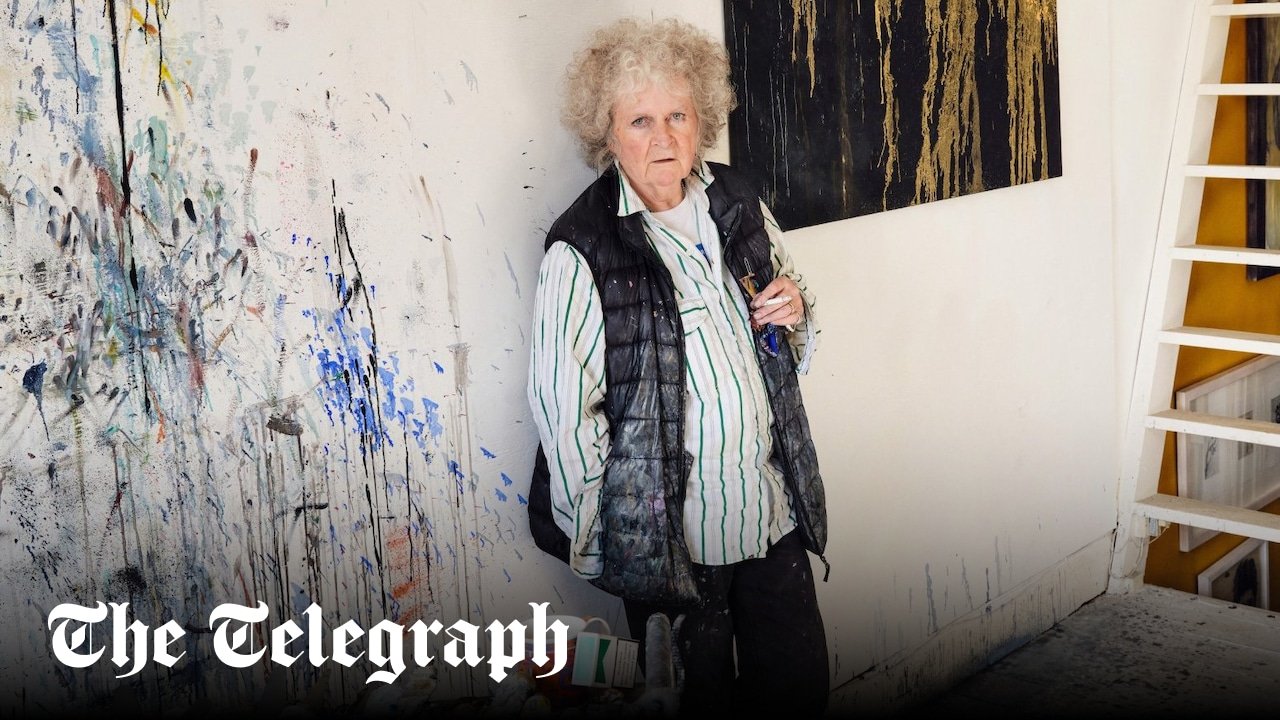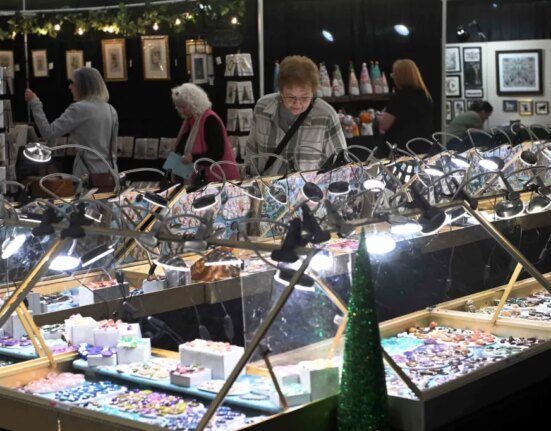Maggi Hambling without a cigarette. What is going on? “From the minute I had oil paint in my hands, there’s been a cigarette,” she says. “And when I gave up for five years, I always had a false one for photographs.” Now, after a brush with death in 2022 – a massive heart attack in New York, chest compressions, three stents in a neck artery – the fags are gone, and the 78-year-old artist is sucking on a tiny vape. (Today’s flavour: Pink Lemonade). Does she miss the real thing? “Course I f—ing miss it. Do I miss cigarettes? I’ve never heard such a question. But, you see, I did have six weeks in Mount Sinai Hospital to get used to the idea, so that was a good start.”
I’m in her studio in Clapham, with Hambling, startlingly, dramatically vivid as ever, a gravitational force dragging all attention towards her. “Do look at the paintings, dear boy,” she says. We’re here to chat about her forthcoming exhibition at Chichester’s Pallant House Gallery. These works are dramatic, too, the palate mostly black and gold; they’re inspired by song – the birdsong of the nightingale, and the music of P J Harvey, Nick Cave and Leonard Cohen. They’re a departure from the “pretty angry paintings” she made about her own mortality and the Ukraine war. “War has been a feature of my work, but I don’t know whether it does any good or not,” she says with an air of dejection.
Hambling wanted to capture what she heard when she went into the woods to listen to nightingales with the folk singer Sam Lee, both knee-deep in mud. “I hadn’t ever heard them before, and it was something so exquisite and extraordinary and magical.” She has attempted to relay that ecstatic experience. “I’m trying to paint the sound of the nightingales,” she says. “I’m trying to paint the impossible. If you paint the possible, what’s the point of that?”
Her work can be divisive. Does she ever feel she is not taken seriously enough? “Well, those feminists got their knickers in a twist over Mary Wollstonecraft,” she says with a snort, recalling the 2020 furore over her sculpture in a north London park commemorating the 18th-century advocate of women’s rights. Hambling created a striking work that placed a tiny figure atop a surge of silver matter, a naked woman, with short hair and prominent pudenda. “Don’t feminists have bodies?” she rails. “There’s been nude sculpture for millions of years. What are they on about?”
She’s a feminist herself, though, isn’t she? “Well, apparently, I am,” she replies, describing how a museum director once rejected her claim to the contrary, telling her exasperatedly, “everything you say is feminist.”







